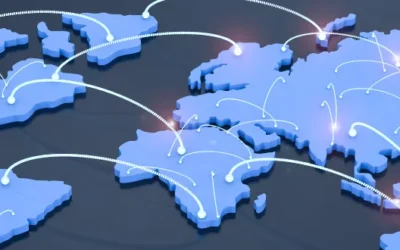Fashion speaks a universal language, yet translating its nuances across different cultures and markets requires more than just linguistic expertise.
In this article, we will learn what translating for the fashion industry involves, the importance of localizing fashion terms depending on the situation, or some fashion translation difficulties we might encounter.
What is fashion translation?
Fashion translation involves translating fashion-related content from the original to the target language while maintaining the same tone of voice, cultural nuances, and brand identity.
This specialized field requires deep knowledge of both the fashion industry and the cultural preferences of the target markets. When brands expand globally, they need to adapt their message to resonate with different cultural sensibilities, and understand local fashion terms, style preferences, and shopping behaviors that vary significantly across regions.
What does translation for fashion brands involve?
Fashion translation involves various content types that require distinct approaches. Each demands specific strategies for effective communication across markets, from technical documents to creative marketing.
At its core, fashion translation involves multiple specialized techniques:
- Transcreation is essential for adapting creative content in the fashion industry. It allows translators to rethink marketing messages while maintaining their emotional impact and persuasive power. This process goes beyond word-for-word translation; it captures the brand’s voice in a culturally resonated way.
- SEO optimization is also crucial. It helps ensure that translated content ranks well on local search engines. This process involves understanding fashion terminology and how target audiences search for fashion items in their respective markets. Professional translators must skillfully incorporate relevant keywords so that the text flows smoothly and remains engaging.
- Localization is another key aspect. It involves tailoring content to fit local market preferences and requirements, complying with local regulations, adjusting measurement systems, and aligning content with typical shopping behaviors in the area.
When translating for the fashion industry, we will commonly cover these types of materials:
- Product descriptions and catalogs
- Technical manuals and care instructions
- Website and e-commerce platform content
- Marketing materials and advertising campaigns
- Social media content and campaigns
- Press releases and PR materials
- Product labels and packaging
- Size guides and measurement charts
- Customer service documentation
- Manuals for the textile industry
Translators must maintain consistency across all materials while ensuring each piece of content serves its specific purpose, such as providing technical information, building brand awareness, or driving sales.
Why fashion companies need professional translation
Today, fashion brands need to communicate with customers worldwide. However, using Google Translate alone isn’t enough; companies need expert translators who understand fashion and different cultures.
Here’s why good translation matters so much in the fashion world:
Building trust through customer connections
When shoppers visit a fashion website, they want to feel confident about what they are buying. Bad translations can make customers doubt your brand.
A study by CSA Research found that websites with content in multiple languages saw 55% more sales than those only in English. This makes sense—you probably wouldn’t buy from a store with messy displays, and customers avoid websites that don’t speak their language correctly.
Protecting your brand from mistakes
Getting translations wrong can cost fashion companies a lot of money. For example, if care instructions are mistranslated, customers might ruin their clothes. Similarly, if size charts are not adequately converted, people will return items that don’t fit.
Professional translators help avoid these expensive mistakes by ensuring that all the details are correct, from fabric descriptions to washing instructions.
Expanding into global markets
Fashion is a worldwide business, and new markets like China, India, and Brazil are becoming more powerful shoppers daily.
A McKinsey & Company report shows the extent of this change—by 2025, these growing markets will account for 55% of all fashion sales worldwide. China is critical, as it is set to become the biggest buyer of luxury fashion items.
But there’s a catch—to sell successfully in these countries, brands must do more than just show up. They need to speak to customers in their own language and understand their unique shopping habits and cultural preferences.
Mastering international SEO
When people shop for clothes online, they use search engines to find what they want. But people in different countries search differently. For example, what Americans call a “sweater,” British people call a “jumper.” Good translators help fashion brands:
- Find the right words that local shoppers actually use
- Create content that feels natural in each language
- Show up in local search results, not just on Google but on search engines like Baidu in China
This helps customers find your brand when shopping online, no matter where they are in the world.
Challenges in fashion translation
Translating fashion content is more complex than changing words from one language to another. Fashion brands face several tricky challenges when reaching customers in different countries.
Let’s look at the main obstacles and why they matter.
Working with complex fashion terms
Fashion localization requires getting all the details exactly right. Translators need to know how to describe fabrics, manufacturing processes, and design features in different languages.
It’s like learning new vocabulary: words for stitching, fabric treatments, and garment construction vary across languages.
Getting these terms wrong isn’t just confusing; it could damage customers’ clothes by following incorrect care instructions.
Making content work for different cultures
Fashion is deeply connected to culture, so something other than what works in one country might work in another. It’s not just about changing words; translators must consider cultural preferences and local fashion traditions.
For example, size labels need careful attention because a size 8 means different things in different countries. Even color names need to change sometimes – what’s called “nude” in one country might need a different name in another to make sense to local shoppers.
Keeping up with fashion’s fast pace
Fashion moves quickly, with new collections coming out every season and flash sales happening constantly. Translators have to work fast while still getting everything right.
It gets even more complicated when launching products in multiple countries at once. For example, winter clothes need to be translated earlier for countries in the Southern Hemisphere, and translators need to consider shopping seasons like Ramadan or Chinese New Year.
Making marketing messages feel right
Fashion marketing is all about creating excitement and emotional connections. Translators don’t just translate words – they need to recreate the feeling of the original message for each culture.
For example, a luxury brand’s slogan must feel fancy and unique in every language, even if the words are entirely different.
Dealing with international fashion words
Fashion uses lots of words from different languages, especially French terms that fashion people know worldwide. Translators have to decide which words to keep in their original language (like ‘prêt-à-porter‘) and which to translate.
This depends on who will read it. Luxury brands might keep more foreign words, while regular stores usually use more local language that everyone understands.
How to choose the right fashion translation agency
When selecting a translation partner for fashion content, brands should look for several key characteristics:
Industry expertise: Translators should possess in-depth knowledge of fashion terminology and current trends. They need to understand the difference between a “sheath dress” and a “shift dress” in multiple languages and know how to maintain the sophisticated tone that luxury brands require.
Cultural competence: It is crucial to be able to navigate cultural differences in fashion translation. A competent agency will have translators who understand both source and target cultures, ensuring appropriate content adaptation while maintaining brand integrity.
Technical know-how: Fashion translation often involves managing multiple file formats, from e-commerce platforms to design software. Agencies should have the technical infrastructure to handle these various formats efficiently.
Are you ready to take your fashion brand global?
At Translate With Style, we help fashion brands connect with international audiences through precise, culturally savvy translations.




